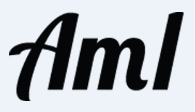Abstract
Ambient Assisted Living (AAL) promotes independent living, while the Internet of Things (IoT) proliferates as the dominant technology for the deployment of pervasive smart objects. In this work, we focus on the delivery of an AAL framework utilizing IoT technologies, while addressing the demand for very customized automations due to the diverse and fluid (can change over time) user requirements. The latter turns the idea of a general-purpose application suite to fit all users mostly unrealistic and suboptimal. Driven by the popularity of visual programming tools, especially for children, we focused in directly enabling end-users, including carers, family or friends, even the elderly/disabled themselves, to easily craft and modify custom automations. In this paper we firstly discuss scenarios of highly personalized AAL automations through smart objects, and then elaborate on the capabilities of the visual tools we are currently developing on a basis of a brief case study.
Access this chapter
Tax calculation will be finalised at checkout
Purchases are for personal use only
Notes
- 1.
Icons are from www.icons8.com.
References
Rashidi, P., Mihailidis, A.: A survey on ambient-assisted living tools for older adults. IEEE J. Biomed. Health Inform. 17(3), 579–590 (2013)
Haller, S., Karnouskos, S., Schroth, C.: The internet of things in an enterprise context. In: Domingue, J., Fensel, D., Traverso, P. (eds.) FIS 2008. LNCS, vol. 5468, pp. 14–28. Springer, Heidelberg (2009). doi:10.1007/978-3-642-00985-3_2
Dohr, A., Modre-Opsrian, R., Drobics, M., Hayn, D., Schreier, G.: The internet of things for ambient assisted living. In: Proceedings of the 2010 Seventh International Conference on Information Technology: New Generations (ITNG 2010), pp. 804–809. IEEE Computer Society, Washington, DC (2010)
Santos, A., Macedo, J., Costa, A., João Nicolau, M.: Internet of things and smart objects for M-health monitoring and control. Procedia Technol. 16(2014), 1351–1360 (2014). ISSN 2212-0173
Bee+, developed by Vigilant. https://www.arm.com/innovation/products/bee-smart-diabetes-tracker.php. Accessed 12 2016
Miller, M.: The Internet of Things: How Smart TVs, Smart Cars, Smart Homes, and Smart Cities Are Changing the World (2015). ISBN-13: 978-0789754004
Resnick, M., Maloney, J., Monroy-Hernández, A., Rusk, N., Eastmond, E., Brennan, K., Millner, A., Rosenbaum, E., Silver, J., Silverman, B., Kafai, Y.: Scratch: programming for all. Commun. ACM 52, 11 (2009)
Microsoft VPL. https://msdn.microsoft.com/en-us/library/bb483088.aspx. Accessed 8 2016
HomeKit developed by Apple. http://www.apple.com/ios/homekit/. Accessed 8 2016
Jung, M., Hajdarevic, E., Kastner, W., Jara, A.: Short paper: a scripting-free control logic editor for the internet of things. In: 2014 IEEE World Forum on Internet of Things (WF-IoT), Seoul, pp. 193–194 (2014)
IoTSyS – Internet of Things integration middleware. http://www.iue.tuwien.ac.at/cse/index.php/projects/120-iotsys-internet-of-things-integration-middleware.html. Accessed 8 2016
Blocky. https://developers.google.com/blockly/. Accessed 12 2016
Lego Mindstorms. http://www.lego.com/en-us/mindstorms. Accessed 12 2016
Tynker. https://www.tynker.com/. Accessed 12 2016
MIT App Inventor. http://appinventor.mit.edu/. Accessed 12 2016
MODKit. http://www.modkit.com/. Accessed 12 2016
Danado, J., Paternò, F.: A Mobile End-User Development Environment for IoT Applications Exploiting the Puzzle Metaphor. ERCIM News 101 (2015). http://ercim-news.ercim.eu/en101/special/a-mobile-end-user-development-environment-for-iot-applications-exploiting-the-puzzle-metaphor. Accessed 12 2016
IoTivity. https://www.iotivity.org/. Accessed 2 2017
iotivity-node. https://www.npmjs.com/package/node-iotivity. Accessed 2 2017
Author information
Authors and Affiliations
Corresponding author
Editor information
Editors and Affiliations
Rights and permissions
Copyright information
© 2017 Springer International Publishing AG
About this paper
Cite this paper
Valsamakis, Y., Savidis, A. (2017). Visual End-User Programming of Personalized AAL in the Internet of Things. In: Braun, A., Wichert, R., Maña, A. (eds) Ambient Intelligence. AmI 2017. Lecture Notes in Computer Science(), vol 10217. Springer, Cham. https://doi.org/10.1007/978-3-319-56997-0_13
Download citation
DOI: https://doi.org/10.1007/978-3-319-56997-0_13
Published:
Publisher Name: Springer, Cham
Print ISBN: 978-3-319-56996-3
Online ISBN: 978-3-319-56997-0
eBook Packages: Computer ScienceComputer Science (R0)


